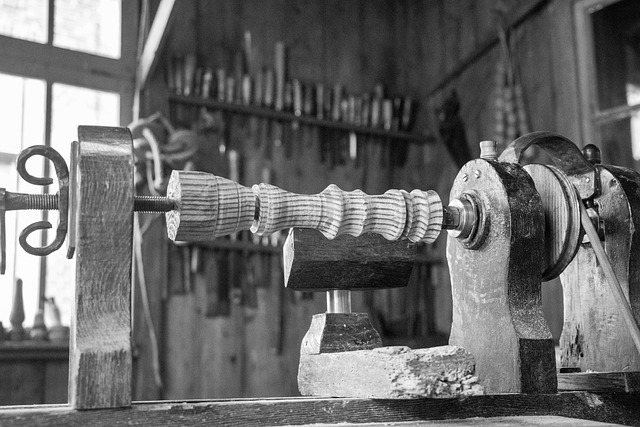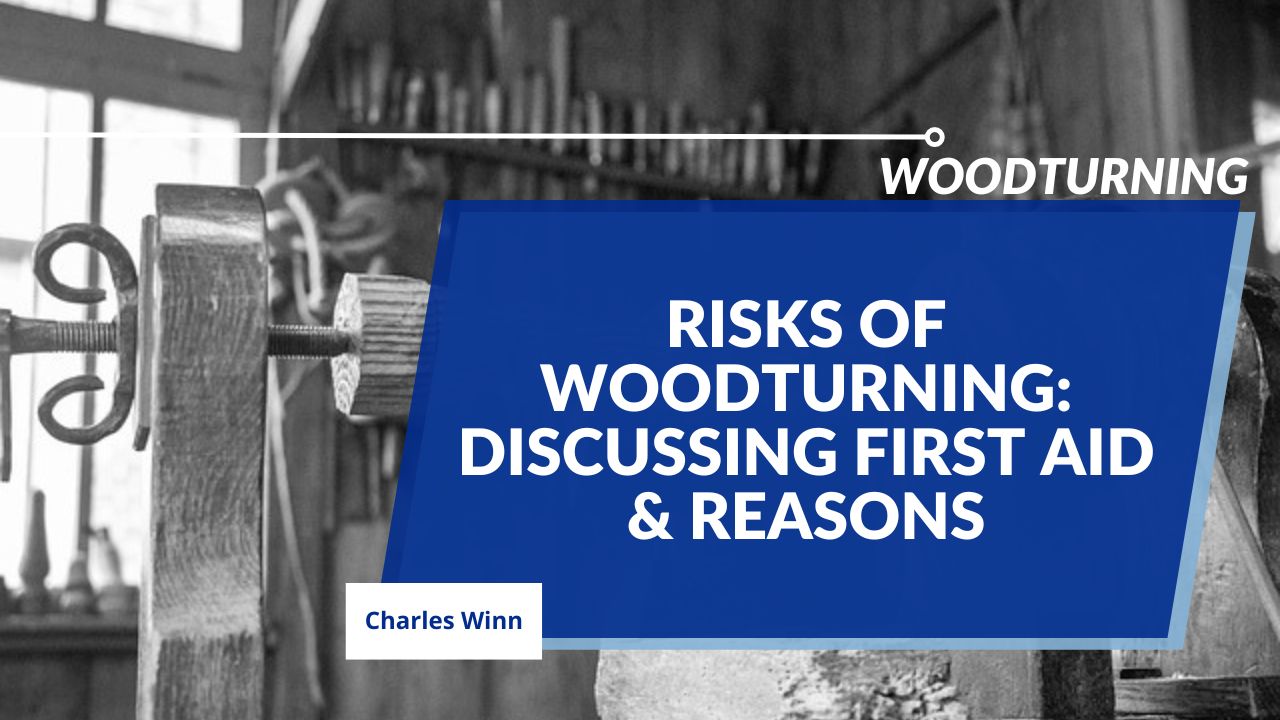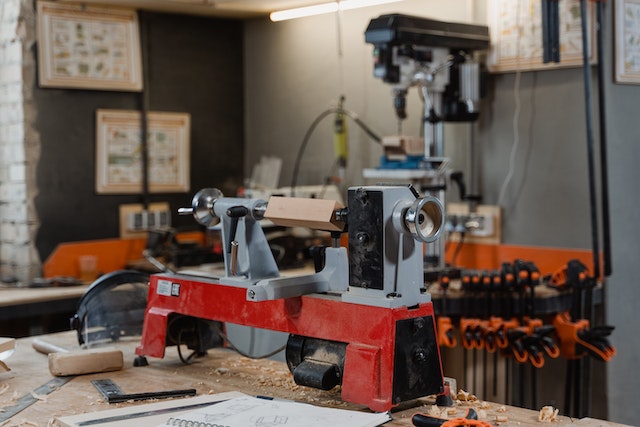Is Wood Turning a Risky Business? Essential Safety Tips Every Turner Needs to Know
Hey there, fellow woodturners and aspiring spindle jockeys! So you’ve got your lathe, your chisels are sharper than a tack, and you’re ready to make some shavings fly. But hold on a sec—before you start turning that blank into your next masterpiece, let’s talk safety. Is woodturning dangerous? Well, like any power tool operation, it can be if you’re not careful. But don’t sweat it; I’ve got the lowdown on what you need to know to keep all ten fingers and turn without fear.
In this article, we’re going to dig into the nitty-gritty of woodturning safety. From “catches” that can send your tool flying to the dreaded “ghosting” effect that can make your workpiece vanish in a puff of sawdust, we’ve got you covered. So stick around, because this is one read that could save your bacon in the workshop.
Remember, folks, we’re not just making art; we’re also making it safely. So let’s get into it and turn wisely, shall we?
The Risks of Woodturning
Alright, let’s get down to brass tacks. Woodturning is a blast, but it’s not all sunshine and rainbows. There are risks involved, and knowing them is the first step to avoiding them. So let’s dive in, shall we?
1. Flying Objects: The Uninvited Guests
One of the most common risks in woodturning is flying objects. Whether it’s a piece of wood or a tool, these airborne hazards can cause serious injury. Always wear safety goggles or a face shield, and keep your work area clean to minimize this risk.
2. Tool Catches: The Sudden Jolt
Ah, the dreaded tool catch. One moment you’re gliding smoothly, and the next, your tool digs in and jerks out of your hand. It’s like the wood just reached up and slapped you. Trust me, it’s not fun. Always keep a firm grip on your tools and pay attention to your technique to avoid this jarring experience.
3. Dust Inhalation: Don’t Underestimate the Fine Stuff
Wood dust isn’t just messy; it can be harmful when inhaled. Prolonged exposure can lead to respiratory issues. Always wear a dust mask or use a dust extraction system. Your lungs will thank you.
4. Noise Pollution: More Than Just a Nuisance
Woodturning can be loud—like, really loud. Over time, this can lead to hearing loss. Don’t underestimate the power of a good pair of earplugs or earmuffs. Protect those ears; you’ll need them to hear the sweet sounds of a successful turning project.
5. Electrical Hazards: A Shocking Reality
We’re dealing with electric-powered machinery here, folks. Always check your equipment for frayed cords or loose connections. An electrical shock can be a real wake-up call, and not in a good way.
6. Kickbacks: My Personal Nightmare
Ah, kickbacks. Let me tell you a story. I was turning a beautiful piece of walnut, lost in the rhythm of the lathe. I got a bit too comfortable, and before I knew it, the wood kicked back and flew right off the lathe. It missed my head by inches but hit the wall with a thud that echoed in my ears for days. It was a wake-up call, reminding me that even experienced turners aren’t immune to the risks. Since then, I’ve always made sure to check my workpiece’s secure mounting and keep my wits about me, no matter how “in the zone” I get.
So there you have it—six risks that every woodturner should be aware of. But don’t let this list scare you away from the lathe. With the right precautions, woodturning is a safe and incredibly rewarding hobby. Just remember, safety first, and happy turning!
Factors That Affect Safety in Woodturning: Risks of Woodturning

Alright, now that we’ve covered the risks, let’s talk about the factors that can either make your woodturning session a smooth sail or a rocky road. These are the variables that can tip the scales, so pay attention!
1. Experience Level: Newbies vs. Old Timers
Let’s face it, experience matters. If you’re new to the game, you’re more likely to make mistakes. But don’t let that discourage you. We all start somewhere. Just make sure you’re extra cautious and perhaps consider taking a beginner’s course or finding a mentor. Even us old-timers need a refresher now and then.
2. Quality of Tools: Don’t Skimp!
The quality of your tools can make a world of difference. Cheap, dull tools are not just inefficient; they’re downright dangerous. They require more force, increasing the risk of slips and catches. Invest in good quality tools and keep them sharp. Your work—and your safety—depend on it.
3. Work Environment: Cleanliness is Next to Godliness
A cluttered workspace is a hazard waiting to happen. Loose wood scraps, tools, and other debris can easily become tripping hazards or catch fire. Keep your workspace clean and organized. A tidy shop is a happy shop.
4. Safety Gear: Suit Up!
I can’t stress this enough—wear your safety gear. Goggles, dust masks, and ear protection aren’t fashion statements; they’re necessities. Don’t even think about turning that lathe on until you’re suited up and ready for action.
5. Machine Maintenance: Keep It Smooth
A well-maintained machine is a safe machine. Regularly check your lathe for any signs of wear and tear, and keep it well-lubricated. A squeaky, shaky lathe is a red flag that shouldn’t be ignored.
6. Mental and Physical State: Are You “Turn-Ready”?
Last but not least, your own mental and physical state plays a huge role in your safety. If you’re tired, distracted, or under the influence, stay away from the lathe. Woodturning requires focus and precision—two things you won’t have if you’re not at your best.
So there you have it, the factors that can make or break your safety in the woodturning world. Keep these in mind, and you’ll be well on your way to countless hours of safe and satisfying turning. Remember, in the world of woodturning, safety isn’t just a guideline; it’s a lifestyle.
Five Essential Safety Measures for Woodturning
Alright, you’ve got the risks and the factors down, so let’s talk solutions. Here are five safety measures that are non-negotiables in my book. Follow these, and you’ll be turning out masterpieces without turning your workshop into a danger zone.
1. Eye Protection: Your Window to Safe Turning
First things first, protect those peepers. A good quality face shield or safety goggles are a must. I prefer a face shield because it offers a wider field of vision and protects your entire face, not just the eyes. Make sure whatever you choose is ANSI-approved and has anti-fog and scratch-resistant lenses. You can’t avoid what you can’t see, right?
2. Dust Protection: Breathe Easy, Turn Easy
Wood dust isn’t just an irritant; it can be a long-term health hazard. Always wear a dust mask or a respirator, especially when sanding. If you’re serious about turning, consider investing in a dust extraction system. These systems suck up the dust at the source, keeping your air clean and your lungs happier.
3. Proper Attire: Dress for Success
Loose clothing, long hair, and jewelry are big no-nos in the woodturning world. They can easily get caught in the lathe and cause severe injuries. Wear fitted clothing, tie back long hair, and leave the bling for another occasion. Also, don’t forget to put on a good pair of non-slip, closed-toe shoes. You need a solid stance for solid turning.
4. Tool Maintenance: Sharp Tools, Safe Turns
A dull tool is a dangerous tool. Why? Because you have to apply more force, making it easier to lose control. Always keep your tools sharp and in good condition. Before each session, give them a once-over to check for any signs of damage or wear. A few minutes of maintenance can save you a world of hurt.
5. Lathe Check: The Pre-Flight Ritual
Before you hit that power switch, give your lathe a thorough check. Make sure all the parts are secure and in working order. Check the tailstock and tool rest to ensure they’re tightly clamped. Spin the workpiece by hand to make sure it clears the tool rest. And always, always, make sure your workpiece is securely mounted. A flying workpiece is a dangerous projectile you don’t want to encounter.
So there you have it, my top five safety measures for woodturning. These aren’t just good practices; they’re habits that every woodturner should develop. Because in this craft, safety isn’t a one-time thing; it’s an all-the-time thing. Happy turning, and stay safe out there!
First Aid Activities: Your Safety Net for Woodturning Mishaps

Alright, let’s get real for a moment. Even with all the safety measures in place, accidents can still happen. That’s why it’s crucial to know some basic first aid activities to perform in case of a woodturning mishap. Consider this your safety net, folks.
Let’s start with the basics. If you get a minor cut or scrape, the first thing you want to do is stop the bleeding. Apply pressure with a clean cloth or gauze. Once the bleeding has stopped, clean the wound with soap and water, and then apply an antiseptic ointment. Cover it up with a bandage and get back to turning—but maybe be a bit more cautious this time, eh?
2. Splinters: The Tiny Terror
Ah, splinters—the bane of every woodworker. If you get one, don’t ignore it. Use tweezers to gently pull it out in the direction it entered. Once it’s out, clean the area with soap and water, and slap on a bandage. If the splinter is deep or the area becomes red and swollen, seek medical attention.
3. Eye Injuries: The Sight Saver
If a wood chip or dust particle gets into your eye, don’t rub it. Head to a sink and flush your eye with cold water for at least 15 minutes. If the irritation persists or your vision is affected, get to an eye specialist ASAP. This is why we wear eye protection, folks!
4. Burns: The Hot Topic
Yes, you can get burns from woodturning, especially if you’re working with friction polish or if your tool gets too hot. For minor burns, run cold water over the area for at least 10 minutes. Apply a burn cream and cover with a sterile bandage. For more severe burns, seek medical attention immediately.
5. Heavy Bleeding: The Red Alert
If you’ve got heavy bleeding from a more serious cut, apply pressure with a clean cloth or gauze and elevate the wound above your heart if possible. This is not the time to “tough it out.” Call for emergency help or get to an emergency room as quickly as you can.
Bonus: The Emergency Kit
Every woodturning workshop should have a well-stocked first aid kit. Make sure it includes bandages, antiseptic wipes, tweezers, burn cream, and a tourniquet. Familiarize yourself with its contents and keep it easily accessible. In an emergency, those few seconds can make all the difference.
So there you have it, your first aid guide for woodturning mishaps. I hope you’ll never have to use this info, but it’s better to be safe than sorry. Remember, the best accident is the one that never happens, so always prioritize safety. Happy turning, and may your only cuts be in the wood!
Final Thoughts: The Full Circle of Woodturning Safety
Alright, folks, we’ve covered a lot of ground here—from understanding the risks and factors affecting safety in woodturning to essential safety measures and first aid activities. It’s a lot to take in, but every bit of it is crucial. Why? Because your safety is not just about you; it’s about everyone who steps into your workshop and even those who enjoy the beautiful pieces you create.
Let’s talk numbers for a second. According to the Consumer Product Safety Commission, woodworking tools account for over 36000 emergency room visits each year in the United States alone. And guess what? A significant chunk of these are related to lathes. That’s not a stat to take lightly.
But here’s the good news: Studies show that proper safety training can reduce the risk of woodworking accidents by up to 50%. That’s huge! And that’s why we’ve gone through all these safety measures and first aid tips. Because knowledge is power, and in our case, it’s the power to keep turning safely for years to come.
So, whether you’re a newbie just getting the feel of the lathe or an old-timer who’s turned enough wood to build a forest, remember this: Safety is a journey, not a destination. It’s a set of habits that we continually practice, not a checklist to be completed and forgotten.
In the world of woodturning, the stakes are high, but the rewards are even higher. There’s nothing quite like the thrill of seeing a rough piece of wood transformed into a work of art by your own hands. But let’s make sure those hands—and eyes, and lungs, and ears—stay safe and sound, shall we?
So, keep those tools sharp, those eyes shielded, and that first aid kit stocked. Because in this craft, safety isn’t just a guideline; it’s a lifestyle. Happy turning, everyone! Stay safe and keep creating those masterpieces.
Hi, my name is Charles Winn, A DIY enthusiast, Mechanical Engineer. I was born and raised in Springfield, Missouri. I am also a father of two troublemaker kids, a terrible photographer, and I love to play chess.








